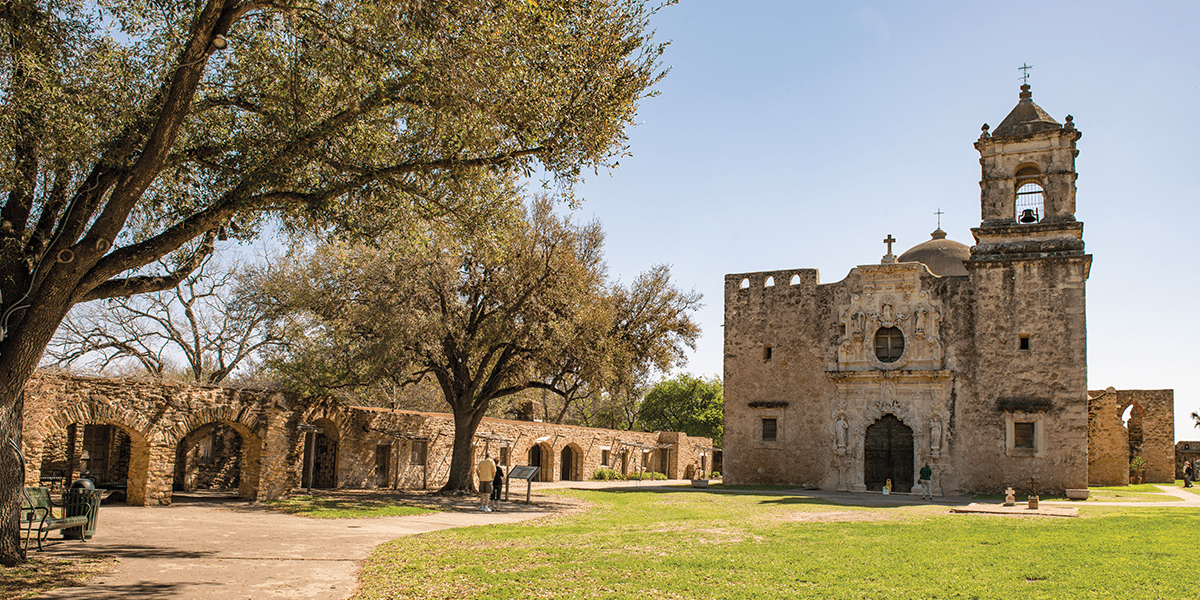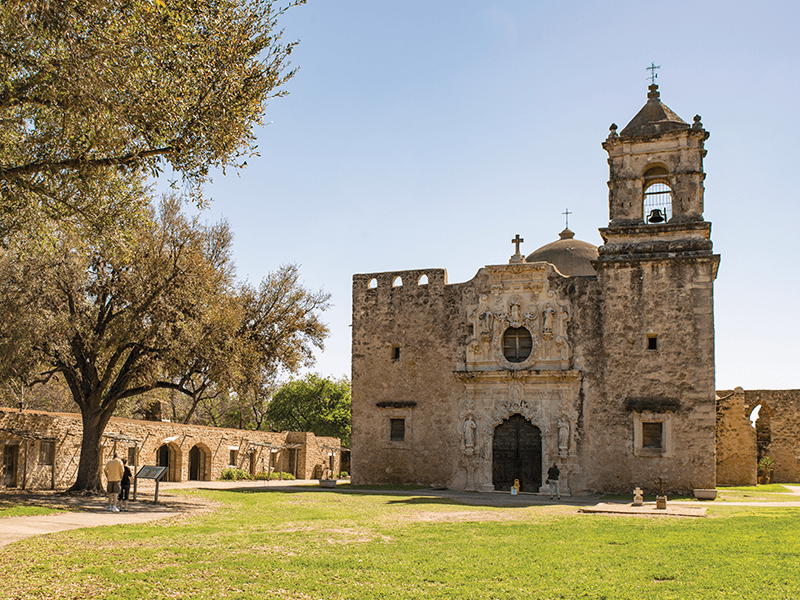
Mission Belles

Mission Belles
Originally Posted 9/01/2018 |
From the Fall/Winter 2018 Issue
A transdisciplinary collective of faculty and staff experts has founded the UTSA San Antonio Missions Research Consortium. The group is dedicated to the study, protection, and enhancement of the historic early 18th-century Spanish colonial sites. The San Antonio Missions National Historic Park was inscribed in 2015 as a UNESCO World Heritage Site—the first in Texas.
The university's Center for Cultural Sustainability, part of the College of Architecture, Construction and Planning, is leading the consortium in collaboration with other research centers, including the Center for Archaeological Research and the Institute for Economic Development.
“UTSA faculty have been studying these missions and their communities for nearly as long as the university has existed.”
“The future of the San Antonio missions is linked to the future of San Antonio and Texas,” says William Dupont, who is director of the Center for Cultural Sustainability and the San Antonio Conservation Society Endowed Professor in architecture. “UTSA faculty have been studying these missions and their communities for nearly as long as the university has existed. The university is home to a deep well of knowledge related to the missions that can strengthen understanding of their past to better manage their future. Academic research has an important role to play in fostering appropriate and sustainable growth respectful of our outstanding heritage.”
Collectively, UTSA faculty members have published more than 50 scholarly works and 20 research reports on the five Catholic missions. Additionally, several active research studies are in progress in such diverse fields as archaeology, architecture, public policy, tourism marketing, and art history. Consortium members collaborate with government agencies and nongovernmental organizations that manage or protect the missions and the adjacent communities in a variety of ways, such as conducting research projects, leading preservation efforts, publishing educational materials, and serving as resources.
San Antonio and other organizations are creating city initiatives, new development, and policy to prepare for the expected influx of tourism and associated increase in revenue. And the UTSA-led consortium exists so that academic and scholarly research is a part of the ongoing dialogue about the missions’ future, according to John Murphy, dean of the College of Architecture, Construction and Planning and the Roland K. Blumberg Endowed Professor of Architecture. “UTSA has long had an interest as both an academic institution and as a neighbor in the growth and preservation of the San Antonio missions,” he says. “We all understand the importance of the missions, and we as scholars hope to aid in collaboration and research opportunities.”
Among the research under way at UTSA, Sedef Doganer, an associate professor of historic preservation and chair of the Department of Architecture, is conducting a market assessment of heritage tourism potential and economic impact within a one-mile radius of missions San José and San Juan. The assessment is being sponsored by the City of San Antonio and led by UTSA's Institute for Economic Development. Shelley Roff, an associate professor of architecture, is researching, analyzing, and cataloging the tools and materials used in the construction of Spanish colonial missions in Texas. And in 2014 Dupont and a team of researchers provided a specialized curriculum about Spanish colonial ways for a demonstration farm at Mission San Juan.

